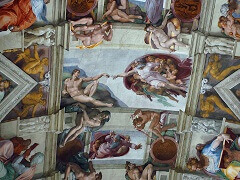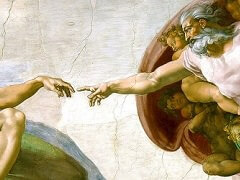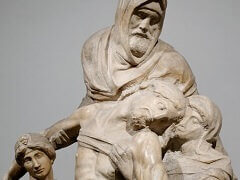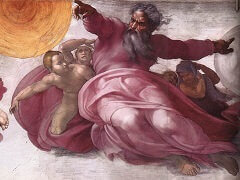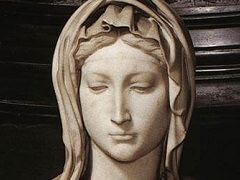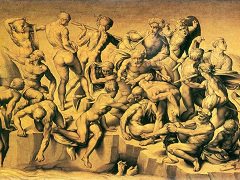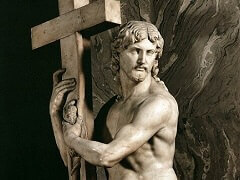The Fall of Man, by Michelangelo
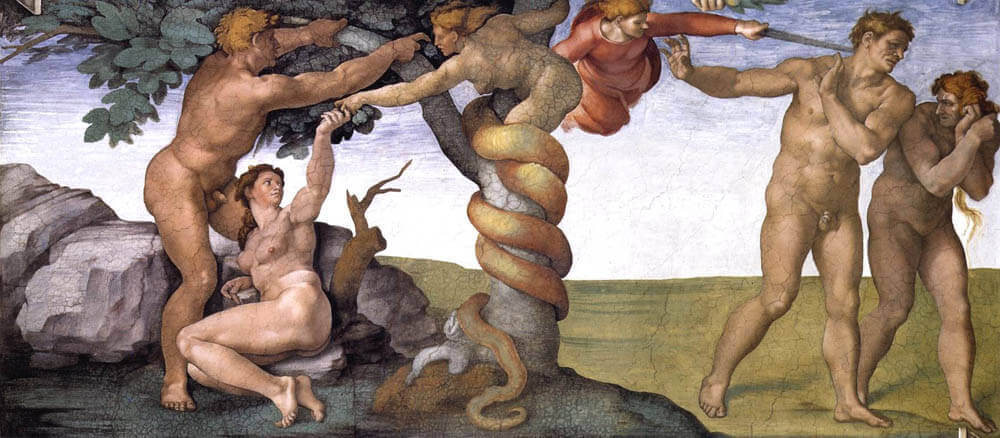
The Temptation and Expulsion had always been depicted separately before. Michelangelo has united them with the gigantic tree that almost fills the scene from side to side, and reflects the shape of the Rovere tree in the reliefs adorning the barrier below. In one overarching shape the crime leads to its punishment. The tempting Satan and the avenging angel function as branches. Recalling Joel's prophecy of the destruction of vine and fig tree, the stump of a withered vine is to be seen behind Eve, and the Tree of Knowledge bears fig leaves and figs, both having strong sexual significance. On the right its shape is continued by the angel's arm and sword and by the Rovere leaves and acorns which invade the scene from the cornucopia held by the youth just outside. The tree that challenges heaven is a fig tree when it represents the Tree of Knowledge which brought mankind to destruction, an oak when it symbolizes the Tree of Life and the punishment of the guilty.
The putto behind Isaiah directs his attention to the Fall of Man. Isaiah had sung of the vineyard of the beloved that brought forth only wild grapes; the Lord devastated it and broke down the fence of stones. To St.Jerome the beloved signified Israel, the vineyard Christ. The vineyard was sacrificed, the Old Law destroyed. The stones remain in Michelangelo's background, and the dead branches suggest the Cross, as in the Creation of Eve. To reinforce the connection between Eve and the vineyard, Michelangelo has given her the pose of the woman in The Deluge who crouches over the wine keg.


